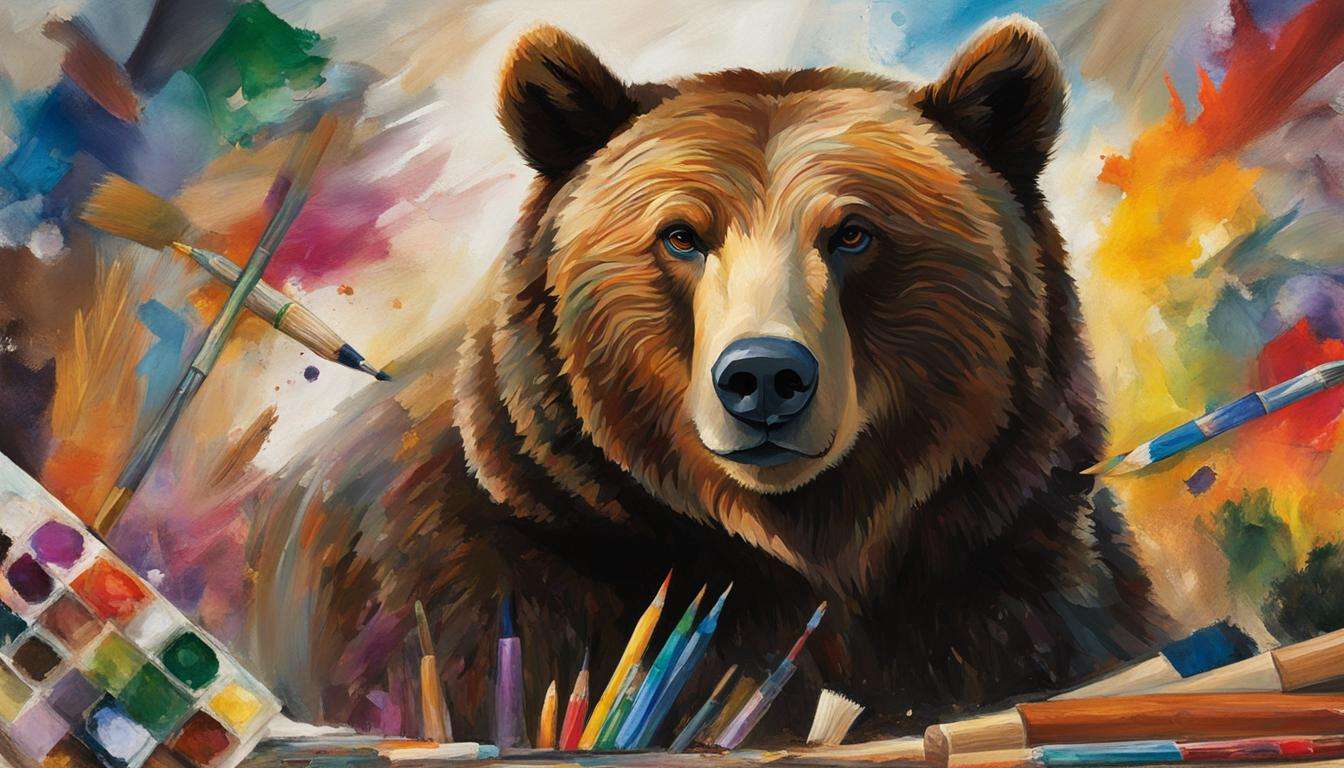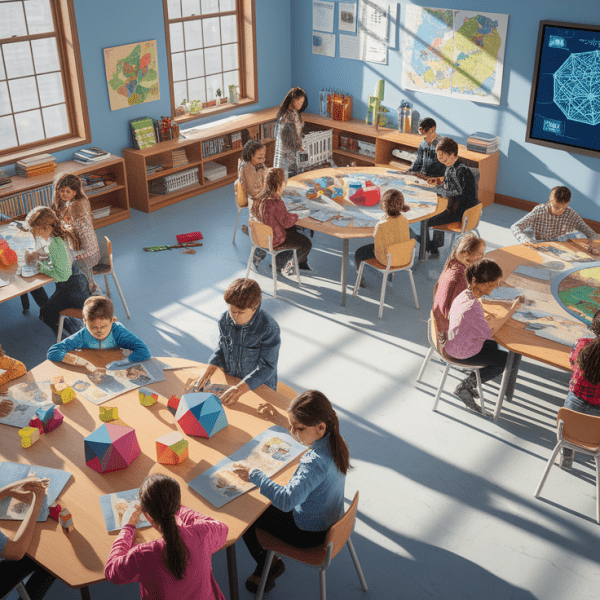In this section, we will explore a comprehensive lesson plan for preschoolers centered around the book “Brown Bear, Brown Bear, What Do You See?” by Bill Martin Jr. The lesson activities include engaging art projects, literacy exercises, sequencing tasks, and thematic unit ideas, all designed to enhance reading comprehension and foster a love for learning.
Art Activities for Brown Bear, Brown Bear
Incorporate creativity into your preschool lesson plan with these interactive art activities inspired by “Brown Bear, Brown Bear, What Do You See?” The incorporation of artistic projects allows children to engage with the story on a visual level while enhancing their fine motor skills.
Activity 1: Brown Bear Mask
Encourage students to make a brown bear mask using a paper plate. Provide brown construction paper, scissors, and glue as materials. Guide the children to cut out ears and a snout from the construction paper and attach them to the plate. This activity allows children to visually connect with the story’s protagonist while fostering their imagination.
Activity 2: Handprint Brown Bear Book
Create a keepsake Brown Bear book with handprints. Provide blank white paper and non-toxic tempera paints in different shades of brown. Assist children in painting their palms and pressing them onto the paper to create bear paw prints. After the handprints dry, bind the pages together to form a book. This activity not only strengthens fine motor skills but also reinforces the association between the story and the visual representation of the characters.
Activity 3: Fork-Painted Brown Bear
Engage children in a sensory experience by painting a brown bear with a fork. Provide brown paint and a plastic fork for each student. Instruct them to dip the fork into the paint and then stamp it on a piece of paper, forming the bear’s body, head, and ears. This activity prompts children to explore different textures and encourages creativity while developing hand-eye coordination.
By incorporating these hands-on art activities into your lesson plan, you can create an interactive and multidimensional learning experience for preschoolers. The engaging nature of these projects not only allows children to visually connect with the characters in “Brown Bear, Brown Bear, What Do You See?” but also enhances their fine motor skills and fosters artistic expression.
Literacy Activities for Brown Bear, Brown Bear
Strengthen students’ literacy skills with these engaging activities related to “Brown Bear, Brown Bear, What Do You See?”
1. Color the Pages of a Brown Bear Booklet:
Encourage children to color the pages of a Brown Bear booklet, which allows them to practice fine motor skills while reinforcing the color words from the story. Provide students with a printable booklet that features the different animals and their corresponding colors. Students can carefully color each page, paying attention to the correct color word association.
2. Color Word Cards:
Use color word cards to help students identify colors and work on letter sounds. Create flashcards with color words and corresponding images of animals from the book. Display the cards, and ask students to match each color word with the correct animal. This activity will reinforce color recognition, letter-sound correspondence, and vocabulary development.
3. Letter Sounds with Animal Props:
Engage students in letter sound practice by using animal props from the book. Provide students with toy animals or picture cards of the animals featured in “Brown Bear, Brown Bear, What Do You See?” Ask students to identify the beginning sound of each animal’s name and say the corresponding letter sound. For example, if a student is holding a picture card of a brown bear, they should identify the sound /b/ for “bear.”
Example:
Table: Color Word Cards
| Color Word | Animal Image |
|---|---|
| Brown | |
| Red | |
| Yellow | |
| Blue | |
| Green | |
| Purple |
These literacy activities for “Brown Bear, Brown Bear, What Do You See?” provide opportunities for students to develop color recognition, letter-sound correspondence, fine motor skills, and vocabulary. By integrating these activities into your lesson plan, you can make the learning experience interactive and enjoyable for young learners.
Sequencing Activity for Brown Bear, Brown Bear
Enhance students’ understanding and application of sequential order with a fun and interactive sequencing activity for “Brown Bear, Brown Bear, What Do You See?” This activity not only reinforces literacy skills but also encourages critical thinking and comprehension.
Activity Instructions:
- Begin by reading the book “Brown Bear, Brown Bear, What Do You See?” with your preschoolers, emphasizing the order in which the animals appear.
- Next, gather pictures or plush toys representing the animals from the story, such as a brown bear, red bird, yellow duck, and more. Place them in a tray or on a table for easy access.
- Guide the students to identify the beginning letter sound of each animal and review their names.
- Have the children work together or individually to arrange the animals in the correct sequential order according to the story.
- Encourage the students to explain their reasoning and discuss the story’s sequence as they place the animals in order.
- Once the sequencing is complete, ask the students to retell the story using the animals in the correct order. This provides an opportunity to practice language skills and reinforce comprehension.
This sequencing activity engages students in a multi-sensory learning experience while reinforcing their understanding of the story’s sequential structure. It also develops vital cognitive skills such as logic, reasoning, and storytelling.
| Materials Needed: | Key Learning Objectives: |
|---|---|
|
|
Thematic Unit for Brown Bear, Brown Bear
Create a comprehensive thematic unit centered around “Brown Bear, Brown Bear, What Do You See?” to engage preschoolers in a multidisciplinary learning experience. This thematic unit allows for the integration of various subjects, including science, language arts, and math, while exploring the beloved children’s book.
Activity 1: Sensory Bin with Colored Beans
Encourage sensory exploration and color recognition skills with a sensory bin activity. Fill a large container with colored beans representing the animals from the book, such as brown for the brown bear. Allow children to feel and manipulate the beans while identifying the colors and discussing the corresponding animals.
Activity 2: Bear Crackers Color Matching Game
Create a fun and interactive color matching game using bear-shaped crackers. Provide students with a variety of colored bear crackers and color cards. Challenge them to match the crackers to the corresponding color cards, reinforcing color recognition and fine motor skills.
Activity 3: Color Exploration with Tea Bags
Engage students in a science experiment by exploring colors using tea bags. Prepare several cups of hot water, each containing a different colored tea bag (such as red, yellow, blue). Allow students to observe how the water changes color when the tea bags are added and discuss the results. This activity promotes scientific observation and vocabulary development.
Activity 4: Language Arts and Math Integration
Integrate language arts and math skills by creating a graph that represents the favorite animal in the book. Provide each student with a picture of an animal from “Brown Bear, Brown Bear, What Do You See?” and ask them to choose their favorite. Using tally marks, count and record the number of votes for each animal. Discuss the results and analyze the graph together as a class.
Incorporate this thematic unit into your lesson plan to enhance student engagement with “Brown Bear, Brown Bear, What Do You See?” while promoting cross-curricular learning. By integrating art, science, language arts, and math, preschoolers will develop a deeper understanding and appreciation for this beloved book.
Animal Lesson Plan for Brown Bear, Brown Bear
Dive deeper into the animal theme of “Brown Bear, Brown Bear, What Do You See?” with an animal-focused lesson plan. This lesson plan provides an opportunity for preschoolers to explore the characteristics and habitats of animals featured in the book. By incorporating real animal props, students will develop a deeper understanding of animals, their sounds, and their connections to the story.
Throughout the lesson, engage students in hands-on activities and discussions that foster curiosity and critical thinking. Encourage them to observe and interact with the animal props, asking questions about their appearances, behaviors, and habitats. Use descriptive language to help develop vocabulary and auditory comprehension.
Here is an outline of the animal lesson plan for “Brown Bear, Brown Bear, What Do You See?”:
- Introduction to Animals
- Exploration of Animal Characteristics
- Discussion about Animal Sounds
- Comparisons between Animals
- Creating Animal Habitats
Introduction to Animals
Begin the lesson by introducing different animals to the students. Show them real animal props, such as plush toys or figurines, representing the characters in the book. Encourage students to observe the colors, shapes, and sizes of the animals.
Exploration of Animal Characteristics
Engage the students in a discussion about the unique characteristics of each animal. Use descriptive words to describe their fur, feathers, or scales. Talk about the different body parts, such as eyes, ears, and tails. Allow the students to interact with the animal props and identify the various features.
Discussion about Animal Sounds
Focus on the sounds that each animal makes. Play audio clips or imitate the sounds yourself. Encourage students to mimic the animal sounds and discuss their observations. This activity helps develop auditory discrimination skills and reinforces the connection between animals and their sounds.
Comparisons between Animals
Guide the students in comparing and contrasting the animals from the book. Create a table with two columns, one for each animal, where students can list the similarities and differences between them. This activity enhances critical thinking and promotes language development.
Creating Animal Habitats
Provide students with materials to create their own animal habitats. This can be done using art supplies, such as paper, crayons, and craft materials. Encourage students to draw or construct the habitats where the animals live based on their characteristics and needs.
Incorporating an animal-focused lesson plan into your “Brown Bear, Brown Bear, What Do You See?” activities allows for a deeper exploration of the book’s themes. Through hands-on experiences and discussions, students will develop a greater understanding and appreciation for animals and their connections to the story.
Conclusion
Engage preschoolers in a captivating reading adventure with the interactive lesson plan for “Brown Bear, Brown Bear, What Do You See?” This comprehensive plan encompasses a variety of engaging activities that promote learning and ignite a love for reading. Through art projects, literacy activities, sequencing tasks, thematic units, and animal-focused lessons, teachers can create an immersive and memorable experience for young learners.
The incorporation of art projects allows children to unleash their creativity and visually connect with the characters in the book. By making brown bear masks, creating handprint keepsake books, or painting brown bears with forks, students enhance their fine motor skills while immersing themselves in the story.
Literacy activities reinforce reading comprehension and language development. By coloring Brown Bear booklets and using color word cards, students practice fine motor skills, reinforce color words, and identify colors. Additionally, letter sounds can be explored using animal props from the book, fostering phonological awareness.
A sequencing activity promotes understanding of sequential order and enhances storytelling skills. By arranging the animals in the correct order according to the book, students create a visual representation of the story’s sequence, strengthening their ability to follow and retell a narrative.
By building a thematic unit around “Brown Bear, Brown Bear, What Do You See?”, teachers can integrate multiple subjects like science, language arts, and math. Activities such as sensory bins, color matching games, and tea bag color explorations engage students in hands-on learning while reinforcing key concepts from the book.
Finally, an animal-focused lesson plan deepens students’ understanding of animals, their sounds, and their habitats. By incorporating real animal props from the story, students can explore the characteristics of different animals, fostering a holistic understanding of the natural world.
By implementing this comprehensive lesson plan, teachers provide preschoolers with a well-rounded educational experience that cultivates a love for reading and strengthens language and cognitive abilities. With the interactive activities centered around “Brown Bear, Brown Bear, What Do You See?”, young learners embark on an engaging and meaningful journey towards literacy.




